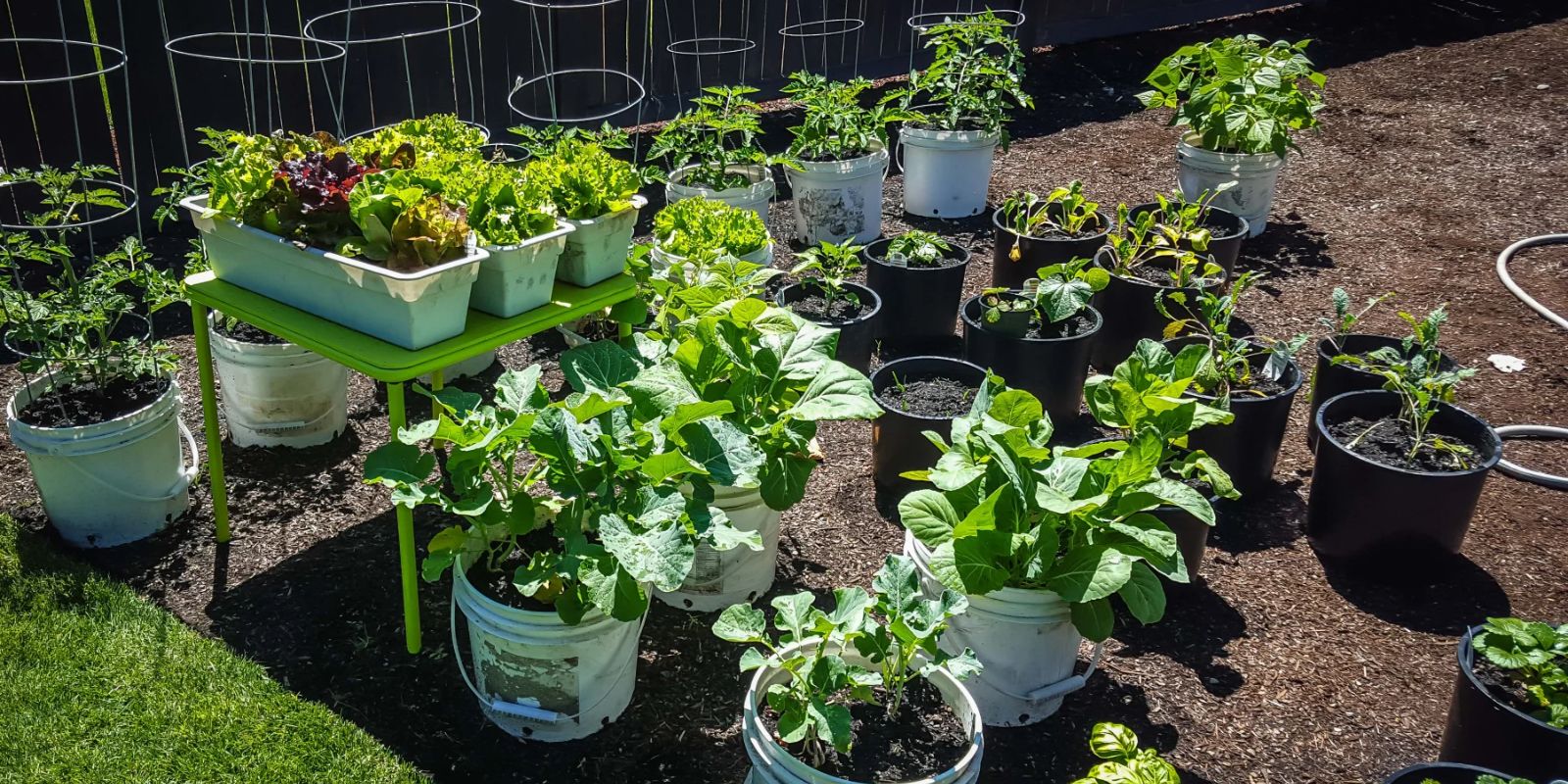Container gardening is an innovative and practical solution for growing vegetables, especially when space is limited. Whether you have a small balcony, a patio, or just a limited garden area, containers can transform your gardening experience. Here’s a comprehensive guide to mastering vegetable gardening in containers and ensuring a bountiful harvest.
Choosing the Right Containers
Selecting the appropriate container is crucial for the success of your vegetable garden. Here’s what you need to consider:
- Size Matters: Larger containers generally provide better results. They hold more soil and moisture, which is beneficial for plant roots. For most vegetables, containers should be at least 12 inches deep and wide.
- Material: Containers come in various materials including plastic, clay, ceramic, and fabric. Plastic containers are lightweight and retain moisture well, while clay and ceramic pots are more decorative but may require more frequent watering. Fabric pots are excellent for aeration and root health.
- Drainage: Ensure your containers have drainage holes to prevent waterlogging, which can lead to root rot. If your chosen container lacks holes, drill some or place it on a layer of gravel to facilitate drainage.
Preparing the Potting Mix
The quality of your potting mix can make or break your container garden. A well-balanced mix provides the right environment for root growth and nutrient absorption:
- Choose a Quality Mix: Opt for a potting mix specifically designed for container gardening. These mixes are typically lighter and more aerated than garden soil, which helps with drainage and root health.
- Enhance Soil: Consider adding compost or organic matter to improve nutrient content. This addition helps retain moisture and provides essential nutrients for plant growth.
Selecting Suitable Vegetables
Not all vegetables are ideal for container gardening. Choose varieties that thrive in confined spaces and adapt well to container life:
- Compact Varieties: Look for dwarf or bush varieties of vegetables. Tomatoes, peppers, lettuce, radishes, and herbs are excellent choices for container gardens.
- Growth Habit: Consider the growth habit of the plant. Bush-type or determinate tomatoes are better suited for containers than vining types. Similarly, choose compact or container-specific varieties of cucumbers and beans.
Planting and Placement
Proper planting and placement are key to ensuring healthy growth and a productive garden:
- Planting: Follow the specific planting instructions for each vegetable, including spacing and depth. Avoid overcrowding, which can limit growth and lead to disease.
- Light Requirements: Most vegetables need at least 6-8 hours of direct sunlight daily. Place your containers in a sunny location or use supplemental lighting if necessary.
Watering Wisely
Container plants often require more frequent watering than garden beds due to their limited soil volume:
- Check Soil Moisture: Regularly check the top inch of soil. Water when it feels dry to the touch. Be cautious not to overwater, as this can lead to root rot.
- Watering Technique: Water deeply so that the entire root zone receives moisture. Avoid watering just the surface, as this can lead to shallow root growth.
Fertilizing for Optimal Growth
Container plants have limited access to nutrients, so regular fertilization is essential:
- Use Balanced Fertilizers: Apply a balanced, slow-release fertilizer to provide essential nutrients. Follow the package instructions for application rates and frequency.
- Organic Options: Consider organic fertilizers such as compost tea or fish emulsion. These options are gentle on plants and contribute to a healthier soil ecosystem.
Pest and Disease Management
Container gardens can be prone to pests and diseases due to the close proximity of plants:
- Monitor Regularly: Inspect your plants frequently for signs of pests such as aphids, spider mites, and whiteflies. Remove affected leaves and use natural pest control methods as needed.
- Prevent Disease: Ensure good air circulation around your plants to prevent fungal infections. Avoid overhead watering to reduce the risk of mold and mildew.
Crop Rotation and Soil Care
Maintaining soil health is vital for long-term success in container gardening:
- Rotate Crops: To avoid nutrient depletion and reduce disease risk, rotate crops between containers each season. This practice helps maintain soil fertility and plant health.
- Refresh Soil: At the end of each growing season, refresh the potting mix by adding new compost or soil amendments. This helps replenish nutrients and improves soil structure.
Harvesting and Enjoying Your Produce
One of the most rewarding aspects of container gardening is harvesting fresh, homegrown vegetables:
- Harvest Regularly: Pick vegetables at their peak ripeness to enjoy the best flavor and nutritional value. Regular harvesting also encourages continued production.
- Enjoy the Fruits of Your Labor: Use your homegrown vegetables in your favorite recipes. Fresh produce from your own garden can enhance your meals and bring a sense of accomplishment.
Conclusion
Container gardening offers a flexible and rewarding way to grow vegetables, even in small or unconventional spaces. By choosing the right containers, preparing quality soil, selecting suitable vegetables, and following proper care techniques, you can achieve a thriving container garden. Embrace the possibilities of container gardening and enjoy a bountiful harvest of fresh vegetables, all from the convenience of your own home.
Ready to transform your space into a productive garden? Start today and watch your container garden flourish!

